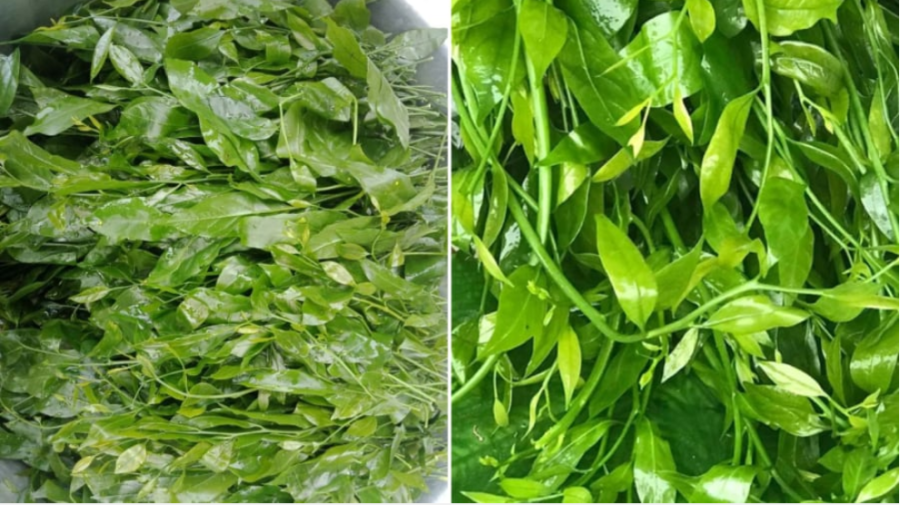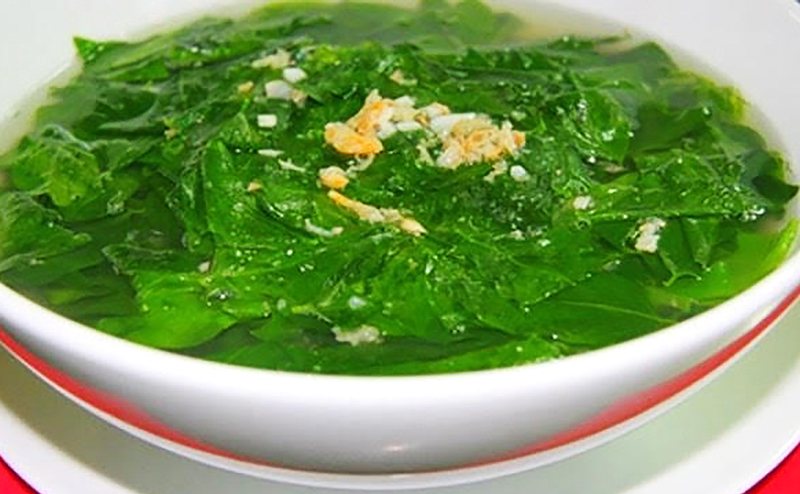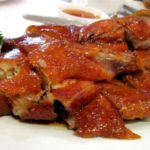Belonging to the tropical climate, Vietnam has many varieties of strange agricultural products, such as rau sắng. In some areas, rau sắng is one of the ingredients to create magnificent dishes. Currently, this type of vegetable is as expensive as beef, but extremely nutritious, so it is eagerly sought after by gourmets.
Rau sắng: As expensive as beef, extremely nutritious
Rau sắng or MSG tree, wild ngót tree, cinnamon ngót… belongs to the type of woody trees, growing naturally on the cliffs of mountainous areas with an altitude of 100m above sea level. This is a type of tree that loves light, with trees up to 13m tall.
Sắng leaves belong to the type of simple leaves, smooth, lean, with a surface like leather. The petiole is about 5 mm long. The leaf blade is lanceolate, or oval, ovoid or obovate. Rau sắng is famous in Hương Pagoda (Hanoi), Kim Bảng rocky mountain area (Hà Nam), Xuân Sơn National Park (Phú Thọ), Lạng Sơn, Cao Bằng, Bắc Kạn… People harvest young shoots from woody trees 3-7m high. Rau sắng flowers grow on the trunk of the tree. Both flowers and young leaves are edible, becoming a specialty today. Currently on the market, rau sắng has a very expensive selling price from 200-300 thousand dong, even some places sell it for 500,000 dong/kg, higher than shrimp, meat. The season of vegetables is in February and March of the lunar calendar every year.

Rau sắng or MSG tree, wild ngót tree, cinnamon ngót…
In terms of nutritional value, rau sắng contains 82.4% water, 5.6-6.5% protein, 5.3-5.5% glucid, 2.2% cellulose. 100g of vegetables contains 0.23g of lysine, 0.19g of methionine, 0.08g of tryptophan, 0.25g of phenylalanine, 0.45g of threonine, 0.22g of valine, 0.26g of leucine, and 0.23g of Isoleucine. These are all essential amino acids for the body. Thus, the nutritional content of rau sắng is many times higher than ngót and đậu ván.
Not only that, rau sắng also brings many health benefits. According to Oriental medicine, rau sắng has a sweet taste, cool properties, is used for detoxification, cooling, diuresis, curing mouth ulcers, and constipation. Vegetables also have the effect of losing weight because they contain a lot of fiber, amino acids, lysine, and carotene. In particular, vegetables can be used for women after giving birth to avoid missing the placenta. In the past, when food was scarce, rau sắng was used to nourish people who had just recovered from illness.
People with mouth ulcers, heat due to beer and alcohol take rau sắng leaves, squeeze them to drink just 1-2 times to eliminate symptoms. For children with acne, cough, pneumonia, parents use this type of leaf to cook soup to help their children detoxify quickly. In the case of children with tongue thrush, crush rau sắng, mix it with honey and use a cotton swab to soak and rub it on the tongue and throat.
Delicious dishes with rau sắng
+ Rau sắng minced meat
Sáng minced meat is a summer heatstroke soup that many people love. The way to prepare this dish is also extremely simple, just wash the vegetables, stir-fry the meat first with spices, add water and bring to a boil, then add the vegetables, season to taste, finally turn off the stove, take it out to a bowl and enjoy.

Sáng minced meat is a summer heatstroke soup that many people love.
+ Rau sắng stir-fried with beef
Stir-fried beef with rau sắng is a dish with many nutrients, but the way to prepare it is not complicated. After buying rau sắng, wash it, cut the beef properly, then marinate it with spices for 30 minutes. Crush a few cloves of garlic, peel and fry them until fragrant, then add the marinated beef to stir-fry briefly, pour it onto a plate and set aside.
Next, still use the beef pan to stir-fry with more oil, then add rau sắng and stir-fry over high heat to keep the green color of the vegetable. When the vegetables are almost cooked, add the beef at this time and stir-fry together, season again and turn off the stove.
+ Rau sắng cooked with dried shrimp
If you do not want to cook broth with minced meat, we can also change the ingredient to dried shrimp. After washing dried shrimp with diluted salt water, continue to soak until it swells after about 10 minutes.
After scooping out the shrimp, crush it, stir-fry it briefly, then add water and boil to make the water sweet. Finally, add rau sắng and season to taste.
Rau sắng is currently very expensive in the market, selling for 200,000 to 500,000 Vietnamese dong per kilogram, which is higher than the price of shrimp or meat. This vegetable is in high demand due to its nutritional benefits and its use in creating magnificent dishes. The price is also influenced by the seasonality of rau sắng, which is typically available in February and March of the lunar calendar.
Rau sắng is an excellent source of essential amino acids, with a high water content of 82.4%. It also contains significant amounts of protein (5.6-6.5%), glucid (5.3-5.5%), and cellulose (2.2%). Additionally, rau sắng provides various essential amino acids such as lysine, methionine, tryptophan, phenylalanine, threonine, valine, leucine, and isoleucine. According to Oriental medicine, rau sắng has a sweet taste and cool properties, making it useful for detoxification, cooling, diuresis, and treating mouth ulcers and constipation.
Rau sắng is a versatile ingredient in Vietnamese cuisine. It can be used to create delicious and nutritious dishes such as rau sắng minced meat soup, stir-fried beef with rau sắng, and rau sắng cooked with dried shrimp. The young shoots, flowers, and leaves of rau sắng are all edible and add a unique flavor to the dishes.
Yes, rau sắng is believed to have several health benefits. It is known to aid in weight loss due to its high fiber content. Additionally, the presence of amino acids, lysine, and carotene makes it a nutritious addition to any meal. Rau sắng is also traditionally used to help women after childbirth to avoid complications. It is also effective in treating mouth ulcers and heat-related issues caused by alcohol consumption.



































